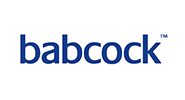Blockchain and Cryptocurrency
What is a Blockchain and Cryptocurrency?
A blockchain is a distributed database or ledger shared among a network of computers (nodes). It is best known for its crucial role in cryptocurrency systems where it maintains a secure and decentralized record of transactions. However, blockchains are not limited to cryptocurrency uses.
- Structure: Unlike traditional databases, blockchains store data in blocks linked together via cryptography. Each block contains information (such as transactions) and is immutable, meaning it cannot be altered once added.
- Decentralization: In the case of Bitcoin, the blockchain is decentralized, meaning no single person or group has control. Instead, all users collectively retain control.
Use Cases
- Cryptocurrencies: Blockchains power various cryptocurrencies like Bitcoin and Ethereum.
- Decentralized Finance (DeFi): Applications that enable financial services without intermediaries.
- Non-Fungible Tokens (NFTs): Unique digital assets representing ownership of digital items.
- Smart Contracts: Self-executing contracts with predefined rules.
Advantages
- Transparency: Every transaction is recorded on a public ledger that anyone can view.
- Immutability: Once data is added, it cannot be changed.
- Security: Cryptography ensures the integrity of the blockchain.
Cryptocurrency is digital money that doesn’t require a bank or financial institution to verify transactions. It can be used for purchases or as an investment.
How it works: Transactions are recorded in a public ledger called the blockchain. This ledger prevents spending coins one doesn’t own, copying transactions, or undoing them. Examples are shown below:
- Bitcoin: The first and most well-known cryptocurrency.
- Ethereum: A platform with its own currency called Ether.
- Litecoin: Similar to Bitcoin but faster.
- Ripple: Used for tracking various transactions beyond cryptocurrency.
In summary, cryptocurrency is digital money, while blockchain is the technology that makes it work. Blockchains are versatile and have applications beyond just financial transactions.
Blockchain and the Aerospace Industry
Blockchain technology has the potential to revolutionize the aerospace industry by enhancing efficiency, security, and accountability:
Problem in Aerospace Industry:
- Currently, much of the critical information related to aircraft maintenance and history is collected manually, which is both expensive and time-consuming.
- Data about an aircraft’s condition and maintenance are spread across up to 40 different systems, often in the hands of multiple parties (including competitors) who may be reluctant to share data.
- Mercenary resellers take advantage of airlines and maintenance, repair, and overhaul (MRO) companies because there is no central clearinghouse for aircraft components.
- Maintenance processes are reactive, and it’s challenging to identify affected planes when regulators or manufacturers require part supersession.
The Solution: Blockchain Technology
Blockchain is a decentralized, immutable, consensus-based technology. It acts as a digital ledger of transactions within a peer-to-peer network. Here’s how it can benefit the aerospace industry:
- Record Keeping: Blockchain can record each time a part is installed or removed from an airplane. It captures details like how long the replaced part was in service and the identity of the technician performing the repair.
- Digital ‘Birth Certificates’: Think of it as creating a digital ‘birth certificate’ for every aircraft part. These certificates are updated every time the plane is serviced or inspected.
- Aggregated Data: These birth certificates can be aggregated into a ‘digital twin’ of the aircraft, providing a real-time snapshot of its condition from assembly to retirement.
- Cost Reduction: Having an accurate view of a plane’s configuration and maintenance history can reduce costs related to downtime and unplanned maintenance.
- Secondary Market Value: It can boost the value of planes in the secondary market and at the end of leases.
- Improved Productivity: Blockchain can improve worker productivity by streamlining processes.
Blockchain’s Unique Fit for Aerospace Challenges:
- Maintenance: Reduce time spent on routine inspections/maintenance and to enable predictive maintenance.
- Finance: Defeat mercenary parts resellers by verifying part ownership and utilization and replace warranties with guarantees.
- Workforce: Improve efficiency by having real-time data on parts and maintenance.
In summary, blockchain technology enhances safety, reliability, and transparency in the aerospace industry, making it a game-changer for supply chain management and overall operations.
Evolution of Blockchain and Cryptocurrency

The evolution of blockchain and cryptocurrency began with the introduction of Bitcoin in 2009 by an anonymous person or group known as Satoshi Nakamoto. Blockchain, the underlying technology of Bitcoin, revolutionized digital transactions by enabling decentralized and transparent peer-to-peer transactions without the need for intermediaries. Over the years, blockchain technology has evolved to support various applications beyond cryptocurrencies, including smart contracts, supply chain management, and decentralized finance (DeFi). Cryptocurrencies have grown into a diverse ecosystem with thousands of digital assets, offering new investment opportunities and challenging traditional financial systems with their decentralized nature.
Aerospace & Blockchain in Future
In the future, blockchain technology holds promise for transforming aerospace operations by enhancing supply chain transparency and efficiency. Blockchain’s decentralized ledger can securely track and authenticate the origin and lifecycle of critical aerospace components, reducing the risk of counterfeit parts and improving safety. Smart contracts enabled by blockchain could automate and streamline transactions within the aerospace industry, facilitating smoother interactions between suppliers, manufacturers, and service providers. Furthermore, blockchain applications in aerospace could extend to data management, cybersecurity, and air traffic management systems, optimizing processes and enhancing overall operational resilience.

Frequently Asked Questions
Common questions and answers pertaining to blockchain, especially in regards to aviation.
How is blockchain technology used in aviation?
Blockchain technology in aviation is primarily used for enhancing supply chain transparency, tracking aircraft parts and maintenance records, and improving cybersecurity through decentralized and tamper-proof data storage.
What are the benefits of blockchain in aviation?
Blockchain offers benefits such as improved traceability of aircraft parts, reduced administrative costs through automation of transactions via smart contracts, enhanced cybersecurity against data breaches, and increased operational efficiency across the aviation ecosystem.
How does blockchain ensure the security of aviation data?
Blockchain ensures data security in aviation by storing information across a decentralized network of computers (nodes) with cryptographic validation. This makes it extremely difficult for unauthorized parties to alter or tamper with data, ensuring the integrity and authenticity of information.
What challenges does blockchain face in aviation adoption?
Challenges include regulatory hurdles regarding data privacy and compliance, interoperability with existing aviation systems, scalability of blockchain networks to handle large volumes of data, and industry-wide adoption and standardization of blockchain technologies.
Can blockchain improve air traffic management and passenger experience?
Blockchain has the potential to improve air traffic management by enabling real-time data sharing among airlines, airports, and air traffic control agencies, thereby reducing delays and enhancing flight efficiency. It could also enhance passenger experience by securely managing digital identities, loyalty programs, and seamless travel transactions.
Video Explanation
The video below will provide more information as to how this technology works
Example Industry User

Babcock International is exploring the use of blockchain technology to enhance the security and efficiency of its operations, particularly in defense and engineering services. Blockchain’s secure and transparent nature helps Babcock ensure the integrity of supply chain data, reducing risks of tampering and fraud. By implementing blockchain, Babcock aims to streamline maintenance records, improve traceability of parts, and facilitate more efficient and secure information sharing across its projects. This adoption supports Babcock’s commitment to innovation and operational excellence in delivering complex and critical services.
Further Resources
Below are some external links to further information on this technology.





